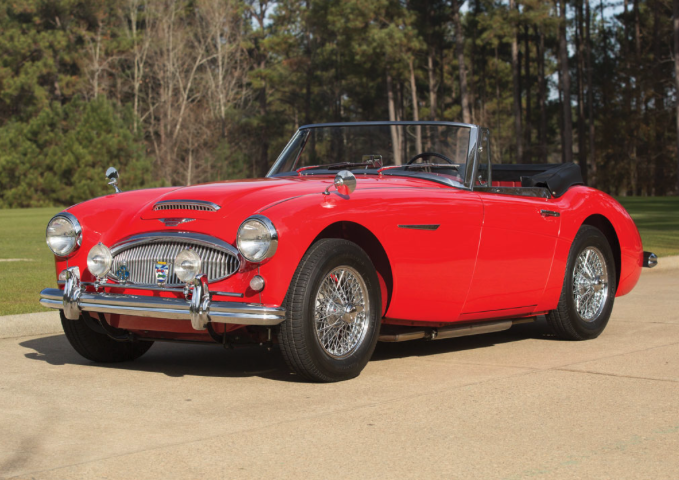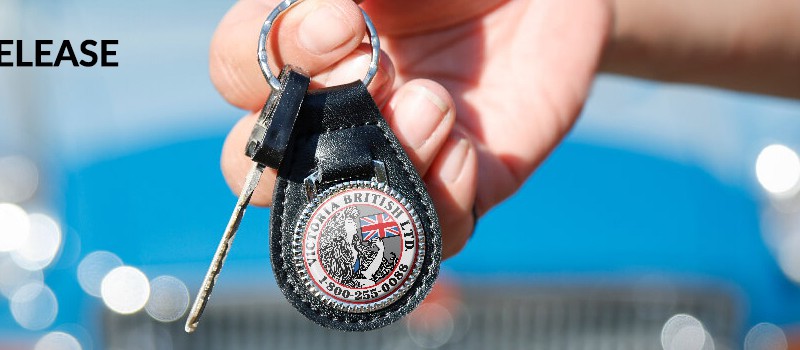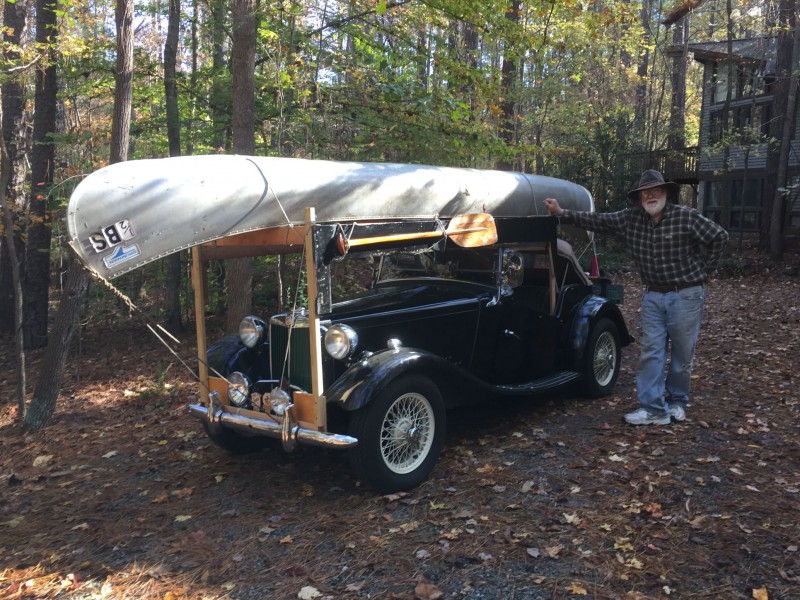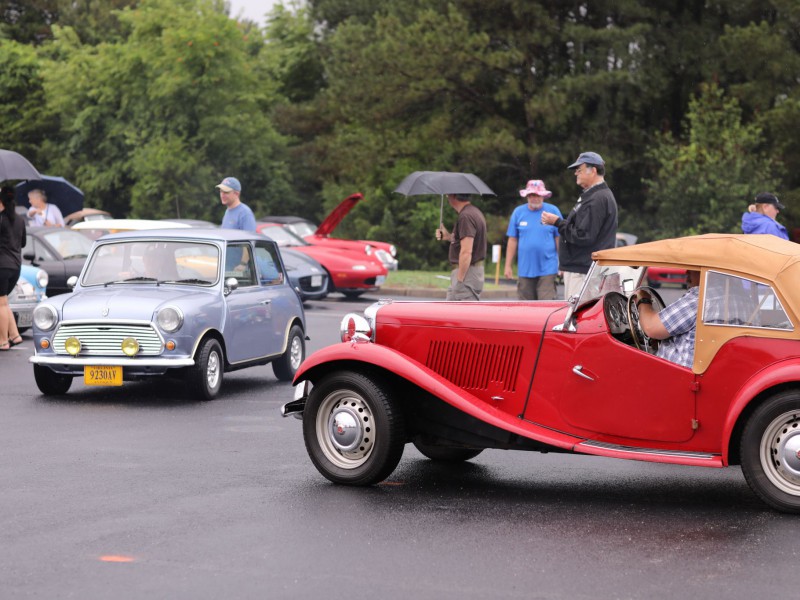The question is asked of us quite often, “what’s my British sports car worth?”
The easy answer, like most things in life, is it depends. British sports car values depend on many factors. What does it depend on? Largely, it hinges on condition, and then is followed by lesser contributing factors like color, timing, trim and sales venue.
The question can also be answered with something pithy, like “not as much as you think.” Perhaps it’s understandable that an enthusiastic owner who has lived with his car for years will tend to overvalue it on the marketplace. After all, even road rash and that one fender ding tell stories of good times with the car on the road. For the prospective owner – not so much. All those great accessories that personalized the car to your tastes may have diminished its overall value as a collectible. That color change from Russet to Red may have kept you sane over your decade of ownership but will have reduced the originality of the car.

Being judged at a regional show this is the level below the rarified air of the National Concours circuit
So what condition is your car in? Unless you happen to have received a Concours evaluation from your national marque club and can realistically hope to exhibit your car on the grounds at Pebble Beach or Amelia Island, chances are you don’t have a car in Number 1 condition. A look at the Hagerty Price Guide can help us identify those cars: The best in the world. The visual image is of the best car, in the right colors, driving onto the lawn at the finest concours. Perfectly clean, the car has been groomed down to the tire treads. Painted and chromed surfaces are mirror-like. Dust and dirt are banned, and materials used are correct and superbly fitted. The one word description for these cars is “concours.” Let’s concede that very few cars will ever fall into this category and yours likely does not either. So is it a Number 2 car?
Even the odds of having a Number 2 car are limited given that these cars reside at a level just below Number 1. Again, according to the experts at Hagerty: Number 2 cars would win a local or regional show. They can be former Number 1 cars that have been driven or aged. Seasoned observers will have to look closely for flaws, but will be able to find some not seen by the general public. The paint, chrome, glass and interior will all appear as excellent. No excessive smoke will be seen on startup, no unusual noises will emanate from the engine compartment. The vehicle will drive as a new car of its era would. The one word description for Number 2 cars is “excellent.” Okay. That doesn’t really describe my car either, what comes next?
The next strata in the valuation range is the Number 3 car and for vehicles that are lovingly cared for and have been restored correctly in the past or are largely original, this is where the very good driver resides. They should be capable of long distance driving without issues and all the various systems should work without issue. The paint, interior or engine compartment should be in good order and attractive without major faults. According to the guide, the one word description for these cars is “good.”

The author’s 1961 3000 BT7 that he is forced to admit resides firmly at Number 3 on the condition scale
Truth be told, most of us own Number 4 cars according to the Hagerty Price Guide. According to them: Number 4 cars are drivers with some flaws visible to the naked eye. Examples of flaws that could be present on Number 4 cars include pitting or scratches on the chrome, a chip on the windshield or a minor dent or chip in the paintwork. You might find a split seam in the seat or a dash crack on the interior, the interior could be of a different type of material from original. No major parts are missing; however, components such as wheels might not be stock. A Number 4 car is often a deteriorated restoration. If too many flaws are present, it is no longer a Number 4 car. “Fair” is the one word that describes these cars.
So let’s assume that most of us have Number 4 cars (at least according to the nomenclature used by Hagerty. How big a difference lies between the top and bottom? Quite a bit and much more than you think. Take the ubiquitous MGB for example in early Mk I convertible form. The price guide tells us that a Number 4 driver should be worth about $5,3000 with the very good driver in Number 3 condition about double that at $11,600. The next stop up the rung is almost twice the cost of the level below at $22,300. The very best MGB, a National Concours award winner and Number 1 car, is priced at $29,300 – or almost six times what the standard driver is worth.
Most value guides differ in degree but not enough to make a world of difference one way or another. A Number 4 car in one guide is a Number 3 car in another but a careful analysis of the descriptive terms should help you figure out what is what.
How does this work in the real world?
Let’s look at a weekend from earlier this year when we had three examples from a marque sell at auction in three distinct condition levels.

1963 Austin-Healey 3000 BJ7 Sports Convertible in Number 2 condition. Image courtesy of RM Auctions.
The first vehicle is a fine example of the line between Number 1 and Number 2. This 1963 Austin-Healey 3000 BJ7 Sport Convertible was a show car with a fresh professional level restoration (less than 200 miles since completion). Most would consider it the perfect example of a car in Number 1 condition – except that it wasn’t.
While it was displayed at the highest levels (the national meet for the Austin-Healey Club of America) it failed to be accorded any of three levels at Concours judging which knocks it down to a Number 2 without question. Even had it received the lowest award – a bronze medal – it would still have been accorded the same condition grade. It was a nice car, well presented and finished in attractive colors. It was a fine car, just not among the best in the world and it almost right on the book at $70,000 (the book price of the car was $68,200).

The perfect compromise. A 1962 3000 Tr–Carb in great condition and lying between Nos. 2 and 3 in value. Image courtesy of Bonhams.
The second vehicle – a 1962 Austin-Healey 3000 Mk II BT7 Tri-Carb – is one of the most desirable of the early 3000 Series (a BN two-seat Tri-Carb roadster is even more valuable) and was also finished to a high standard. This was restored to a very high level (albeit over a decade ago) and that quality restoration was driven so that the car now sits somewhere between a Number 2 and a Number 3.

The tidy, clean and correct engine bay of this Tri-Carb falls just between Nos. 2 and 3 in condition, Image courtesy of Bonhams.
Much nicer than a very good driver but somewhat too worn in to remain even a regional show winner (where the judging is based on objective criteria) this was perfectly in the middle and the auction results bear that out. The book places a Number 3 car at $31,700 and a Number 2 at $57,000. This particular car made $46,500 to split the baby between the two levels.
What would a Number 4 condition car look like?

Engine compartrment let down by incorrect colors and finishes and general grime. Image courtesy of Bonhams.
The last vehicle across the block is the perfect example of just such a car. Even a casual enthusiast of the marque would recognize flaws in the presentation of this 1963 Austin-Healey 3000 BJ7 Sports Convertible – the same model as the Number 1 car discussed above – from the non-original exterior colors to the decision to paint the valve cover in red. The interior materials were incorrect for the car and in the wrong colors to boot and nothing about the car was original.

Incorrect materials and colors place this car far down into the lower reaches of Number 4 condition. Image courtesy of Bonhams.
This is where customization can be problematic given that the previous owner probably loved the car with red carpet and the blue seats it was not likely to impress another owner. How did it do across the block? Actually, better than expected as it out performed the book value (at $29,100) by a fair amount when it sold for just under $37,000. Sometimes the market does what it wants, and it did on this day.
What does this all mean? It means that before you consider buying or selling your car do some research and be realistic with what you are willing to pay or part with something for. Is it possible to do better than book value (of course, witness the last example above)? Is it possible to do worse? Most definitely, especially if you are not careful with how you approach the task. Consult the price guides, talk to some experts in the field and do your homework. There are always bargains out there, but fright pigs lurk in the bushes too. In the words of Michael Conrad, “be careful out there.”
By Johnny Oversteer










'Class Struggle – British Sports Car Values' have 3 comments
May 14, 2015 @ 7:15 pm steve white
I have been dealing with moss motors for i think about 2 years now. Cant say how much i love dealing with a company that is as wealthy on knowing what i want and always making sure that i’m satisfied. I am so greatfull to have them covering my back. I have a 1967 mgb gt hardtop they are making my dream come true.I have not found anything that they cannot get for me yet.And there knowledge about these vehicles is above all.Thank you moss motors.A very great company.
May 15, 2015 @ 4:09 am nikasj
We’re glad to be there for you and look forward to many more years on the road with you together!
June 27, 2015 @ 11:40 am Mick O'Malley
To this “older” guy who has always wanted and now looking to buy a 3000 BJ8, as of today, June 27, 2015 the market seems to have turned corrupt 🙁 . Sellers are asking #2 and #3 prices for #4 and #5 cars.
Thanks for the ‘roadmap’ to sanity!!!